The PCC car is alive and well just 50 miles from Chicago, in Kenosha, Wisconsin. CERA made a trip there on September 20th, as part of our 75th Anniversary celebrations. Our charter bus was full, and everyone seemed to enjoy themselves.

The Chicago car really looks quite nice, even if the green they used is a bit darker than the original. (Photo by David Sadowski)
Master mechanic Bradley Preston keeps the PCC fleet in tip-top shape. While fans sometimes nitpick minor details, such as the “wrong” shade of paint on a car, it’s a miracle that these cars are in such great shape. All are at least 60 years old.
Consider what a feat it would be to have a fleet of working taxicabs using 1951 automobiles. That’s something akin to what we have here, and it’s a tribute to Mr. Preston’s skill and dedication that these cars continue to give good service after all these years.
The Kenosha streetcar runs in a loop, in an east-west direction, covering a distance of slightly less than two miles. In operation for a dozen years or so, it has met its goals of providing transportation and attracting tourists.
Nearly all the cars in the Kenosha fleet came from Toronto. While Toronto got many cars from the US second-hand, none of the Kenosha cars fall into that category.
One car retains Toronto colors, while the other imports have been repainted in tribute to other cities that had PCCs, including Chicago, Pittsburgh, Cincinnati, and Johnstown (the smallest US city that had PCCs). Another car is from Philadelphia, and remains in SEPTA colors. That car dates to 1948, and is the oldest one in the fleet.
While the cars never really open up past about 20 mph, the ride around the trolley loop is quite enjoyable. There are various attractions along the way, including museums, a waterfront, and the train station where you can take a Metra train to Chicago.
Kenosha is going forward with plans to build a second trolley loop, in a north-south direction. The full city council is expected to approve this in the near future. These plans may include a “Grand Union” allowing streetcars to change from one route to the other without going all the way around the loop.
Kenosha’s streetcars have been, and hopefully will continue to be, an important part of a successful transition o a post-industrial era. They are well worth a visit.
-David Sadowski
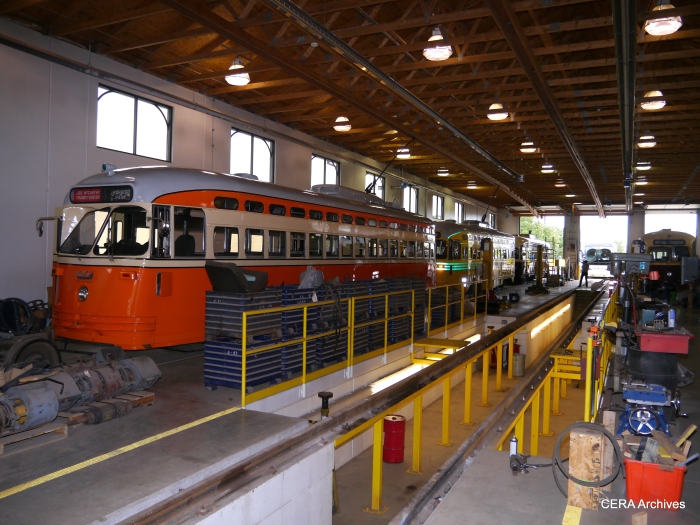
The Kenosha shops, where Bradley Preston works his magic. (Photo by David Sadowski)

The Johnstown car. (Photo by David Sadowski)
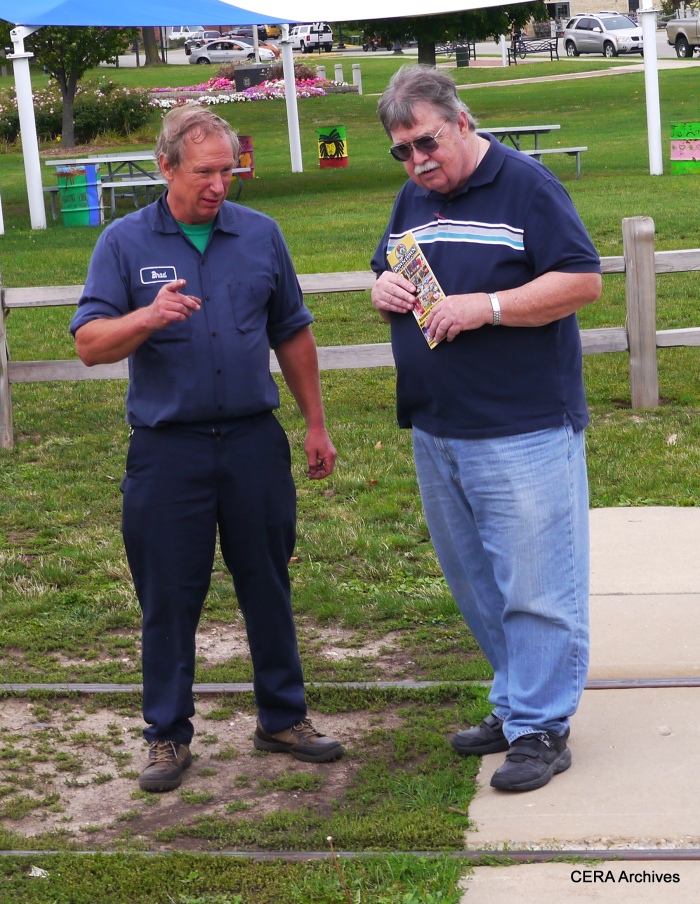
Streetcar technician Bradley Preston chats with CERA President Joe Reuter. (Photo by David Sadowski)
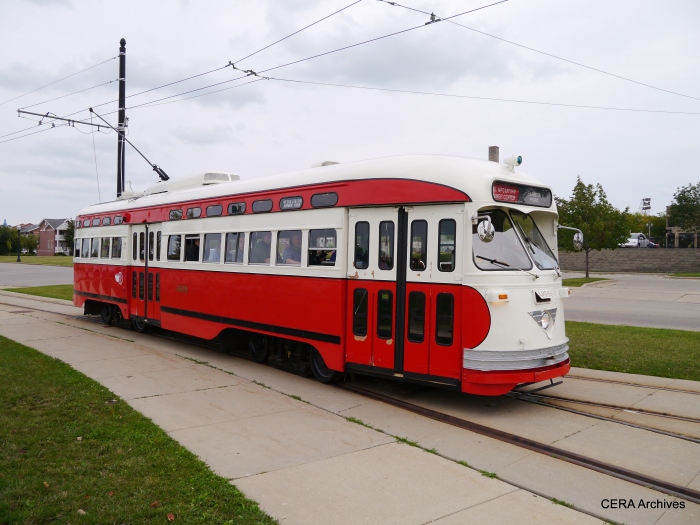
The Pittsburgh car. (Photo by David Sadowski)
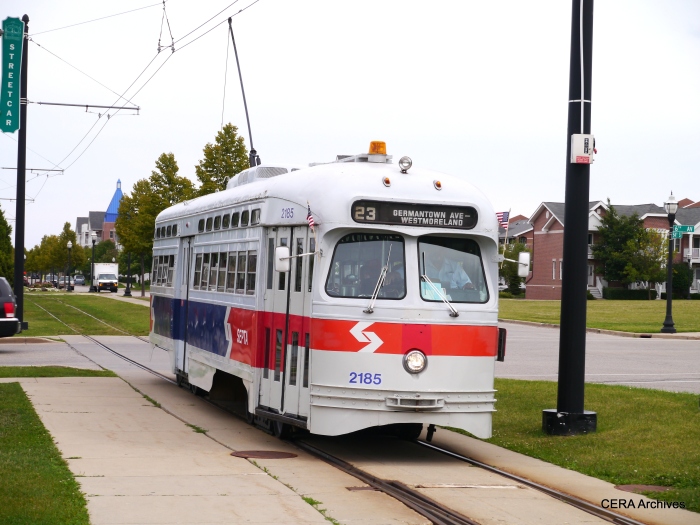
The Philadelphia car, still in SEPTA paint. Other Kenosha cars are ex-Toronto, and are painted in tribute to various cities that had PCCs. (Photo by David Sadowski)
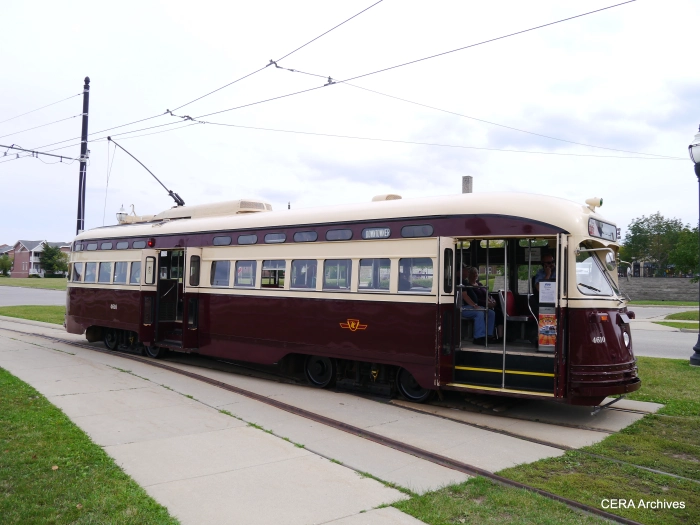
The Toronto car. (Photo by David Sadowski)
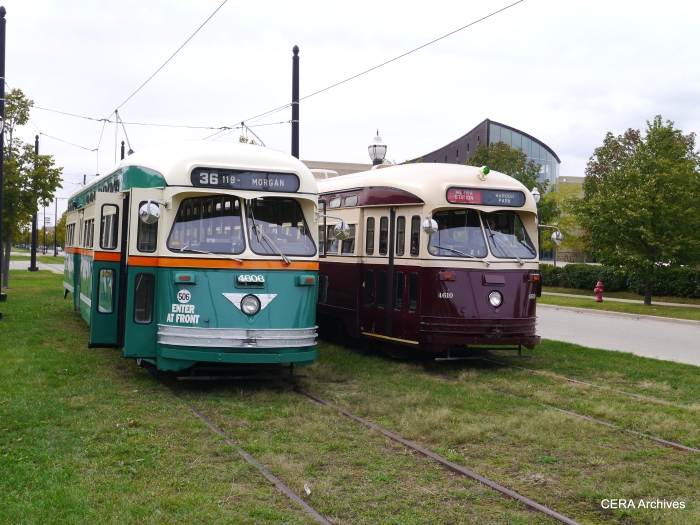
Two “second cities” cars meet (Chicago and Toronto). (Photo by David Sadowski)
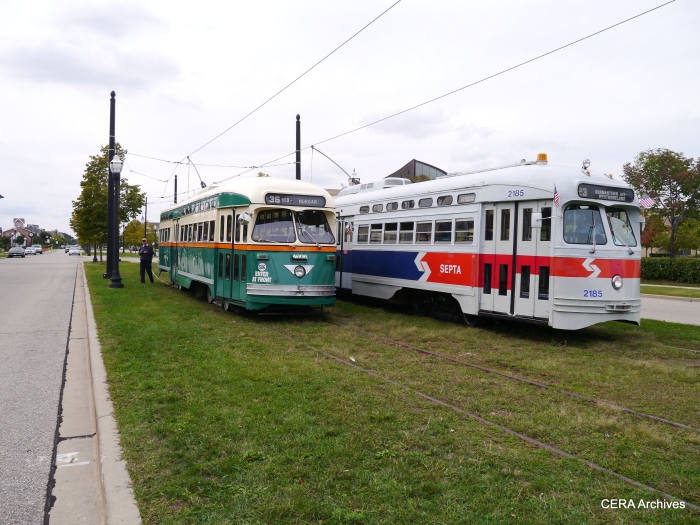
Chicago meets Philly. (Photo by David Sadowski)

Chicago and Cincinnati. (Photo by David Sadowski)
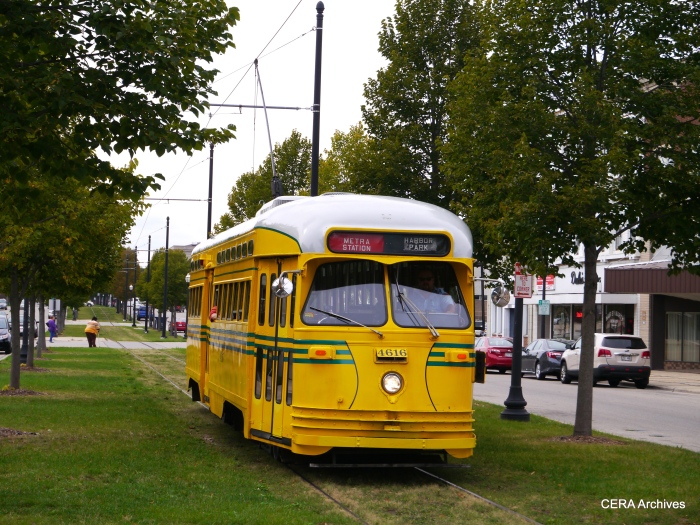
The Cincinnati car in action. (Photo by David Sadowski)
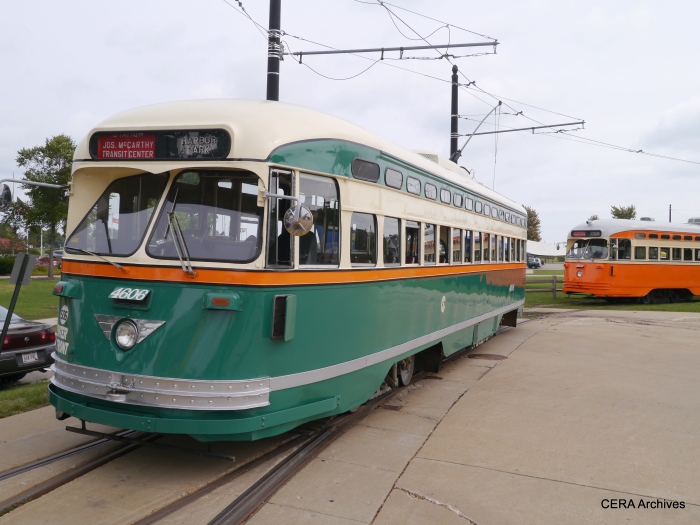
Cars ready to go back into the barn. (Photo by David Sadowski)
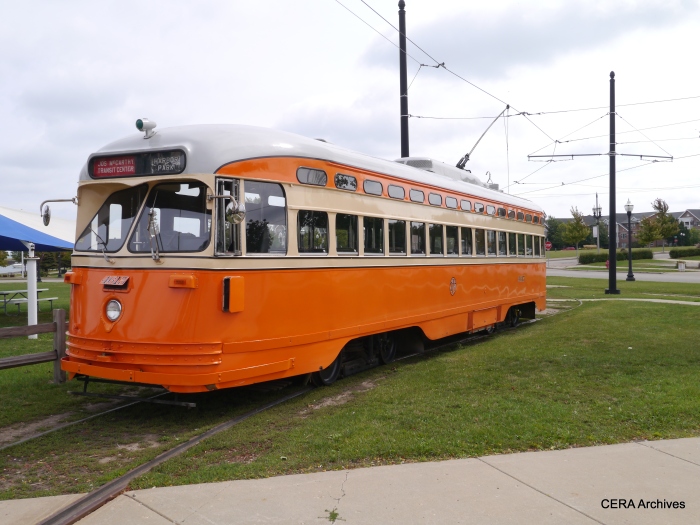
The Johnstown car would be more authentic if it had a big Pepsi-Cola bottlecap on the front, like so many of the originals did there. (Photo by David Sadowski)

The Pittsburgh car. (Photo by David Sadowski)
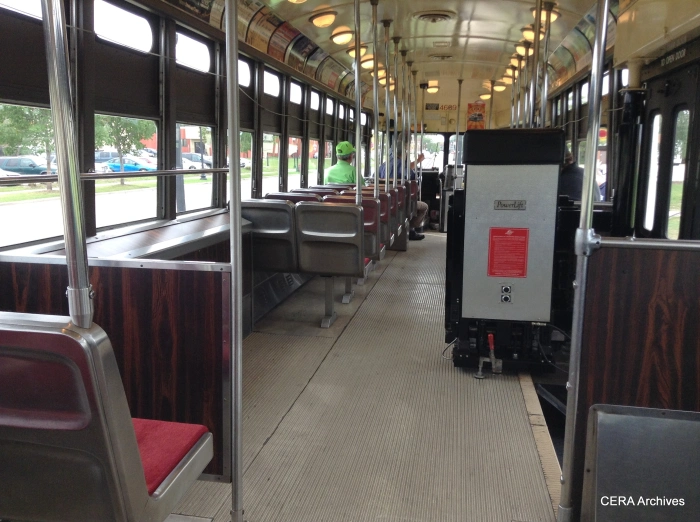
Kenosha’s PCC have wheelchair lifts. (Photo by Diana Koester)
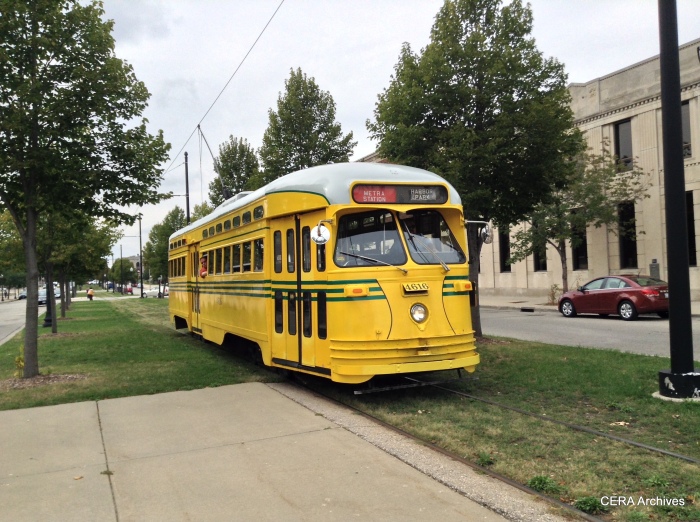
Cincinnati cars actually used two trolley poles, much as trolley buses do. The city was afraid that grounding the electricity through the track would somehow electrify underground pipes. (Photo by Diana Koester)
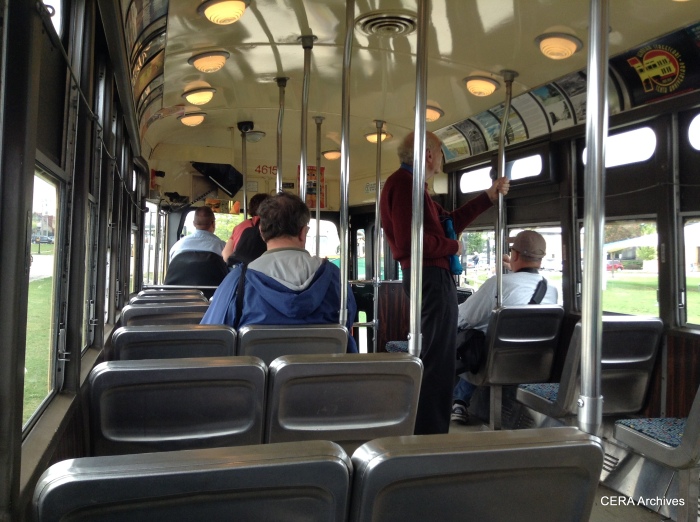
PCC interior. (Photo by Diana Koester)
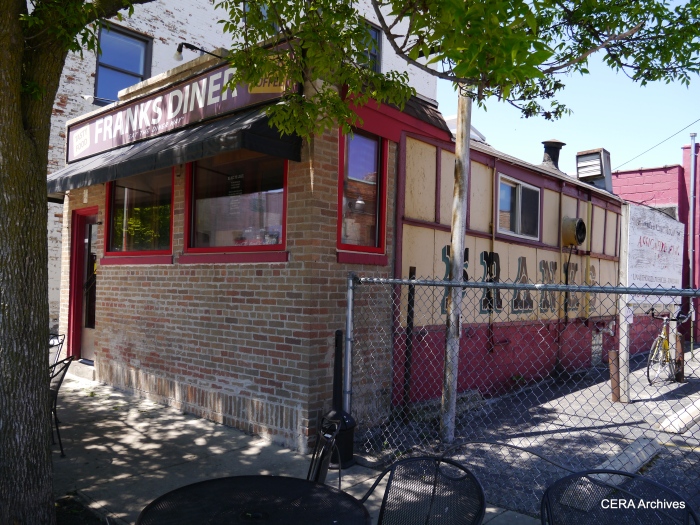
The Franks Diner was closed the day of our visit, but is always worth a trip when you’re in Kenosha. (Photo by David Sadowski)
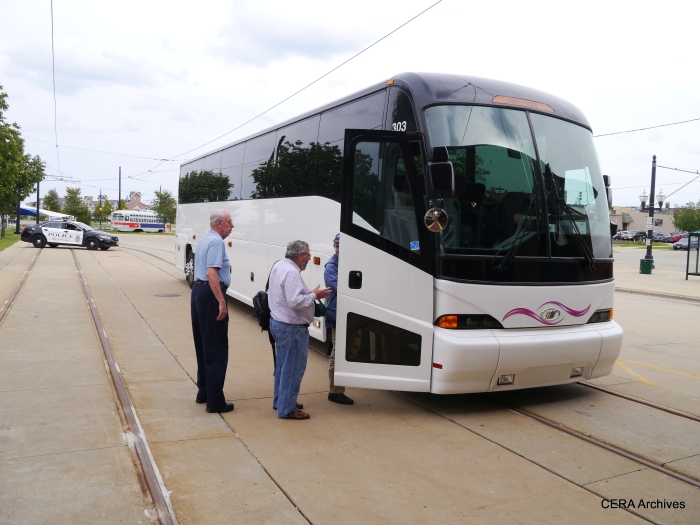
Fans board the CERA charter bus. (Photo by David Sadowski)